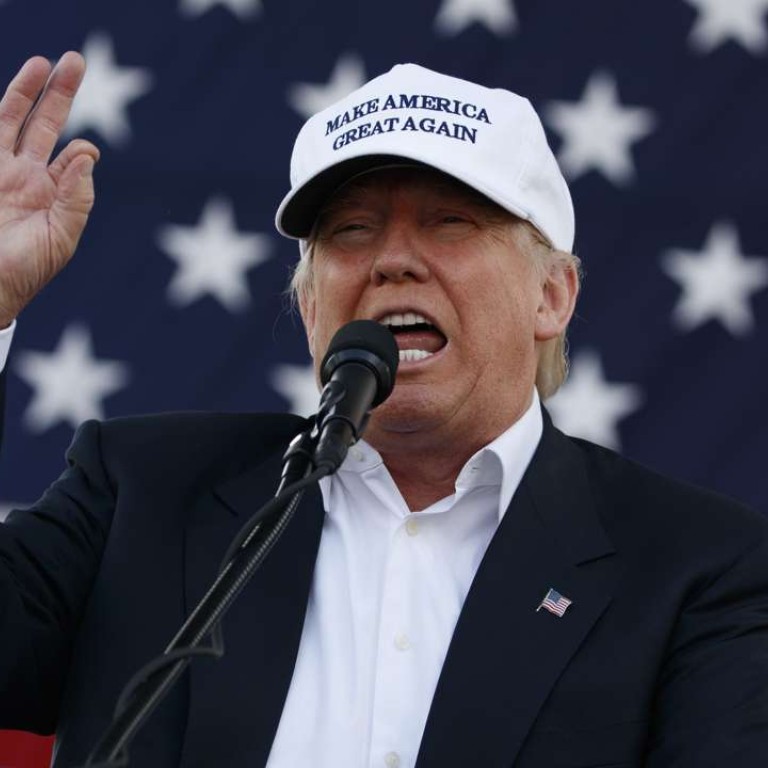
How race and identity divide America: the Republican transformation
Although race and identity have emerged as the principal dividing line between the main American political parties, both the Republican and Democratic parties are also deeply divided internally.
The Democratic Party is socially liberal; its leadership is pro-business, but it has a broad-based insurgent progressive wing. The Republican Party is socially conservative; its leadership is pro-market, but has a dominant white working-class support base.
Hillary Clinton, a Washington insider and seasoned political operator, represents the pro-business establishment leadership of the Democratic Party. Donald Trump, an outsider and a natural populist authoritarian, represents grassroots Republican voters, but not the Republican leadership.
Sentiment against insiders, the elites and the establishment runs strong in America today. So who will win?
If voters do not cross party lines, then the election outcome will be a close call. The Republican grassroots, which gave the party majorities in both the Senate and the House of Representatives during Obama’s administration, is still strong and is driving the success of Trump.
This turn of events is all the more remarkable when you consider how the Republican Party began its existence: fighting against the expansion of slavery under Abraham Lincoln.
Trump is splitting the Republican Party by stoking white racial fears and isolating its leadership
Over the past century and a half, the party went from being racially progressive for its times, to getting little support from non-white voters. It went from a Northern-only party to one that dominates the South.

These changes were driven by historical events. The American Civil war, the passage of the 13th amendment abolishing slavery, the increasing industrialization of the northern US, the Great Depression, and the civil rights movement of the 1960s all pulled at party loyalties in different ways.
The recent shifts started in the wake of the civil rights movement when Republicans began courting white Southerners and the disaffected white working class, using race and identity as the dividing line with Democrats. By 1994, the Republicans had enough support to control the House for the first time since 1955, a position it has held for 18 of the past 22 years.
In order to hold onto power, the Republican Party has had to maintain tight discipline over its members and the political agenda to ensure consistent party voting, and over elites to ensure consistent messaging
Nonetheless, the contests for House and Senate seats have been very intense, and they have become more ideologically-based. This has set the stage for American politics to be trapped in a cycle of ever-escalating political polarisation.
In order to hold onto power, the Republican Party has had to maintain tight discipline over its members and the political agenda to ensure consistent party voting, and over elites to ensure consistent messaging. This has set the stage for the party leadership to become increasingly divorced from the desires of their voters.
The Tea Party movement, which sprang into existence in the early years of the Obama administration, was partly about opposing Obama’s economic policies and immigration, but also partly about their conviction (right or wrong) that their party’s national leaders tended to sell them out. Talk radio and other conservative media outlets helped stoke this perception. This deep distrust of elites helped pave the way for Trump.
The rise of Hispanic immigration has also created tension among Republicans. Legal immigration has major electoral implications – in 2012, exit polls showed 71 per cent of Hispanic voters backed Obama.
Illegal immigration, meanwhile, has risen to the top of the political agenda. Democrats and some leading Republicans cooperated on a bill to give unauthorised immigrants a path to legal status. But it produced a huge backlash from the predominantly white Republican base, which viewed the bill as “amnesty” for people who broke the rules.
This paved the way for Trump to launch his presidential candidacy. He appealed to Republican primary voters’ resentment and mistrust of party elites, as well as their demographic anxieties, and he succeeded even though he isn’t a traditional ideological conservative. This perhaps reveals where the priorities of the party’s voters truly lie.
Now the GOP is at a crossroads. It’s possible that the turn toward Trump and his ideas are an aberration, and that a new generation of Republican politicians will find a way to be more than just the party of white resentment and somehow rediscover their roots as the party of Lincoln.
But it’s also quite possible that Trump is just the beginning, and that the party will increasingly play to white voters by appealing to racial tensions.
Lincoln had split the Democratic Party in 1860 by promising to abolish slavery without promising racial equality. Trump is splitting the Republican Party by stoking white racial fears and isolating its leadership.
Richard Wong Yue-chim is Philip Wong Kennedy Wong Professor in Political Economy at the University of Hong Kong

